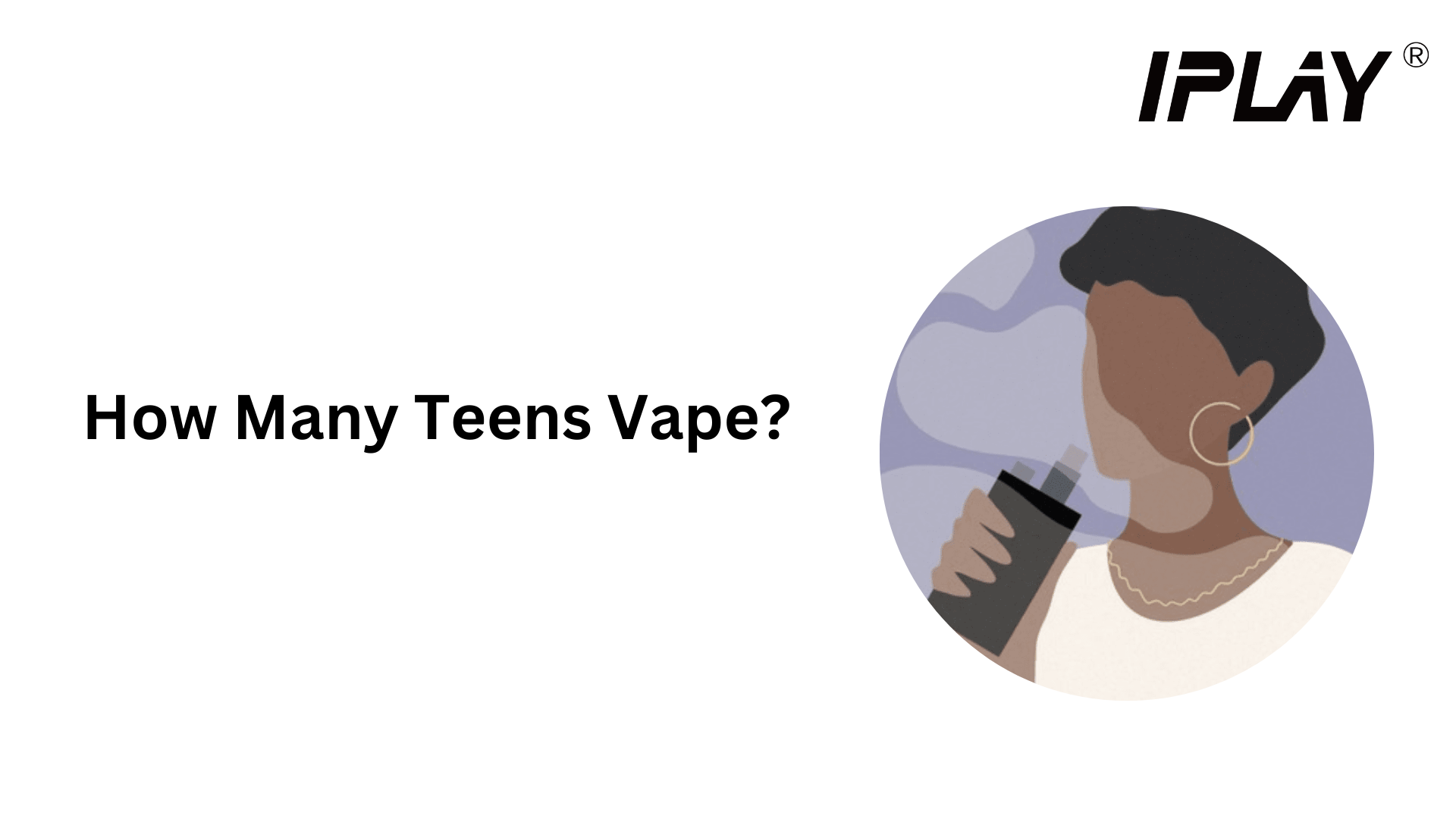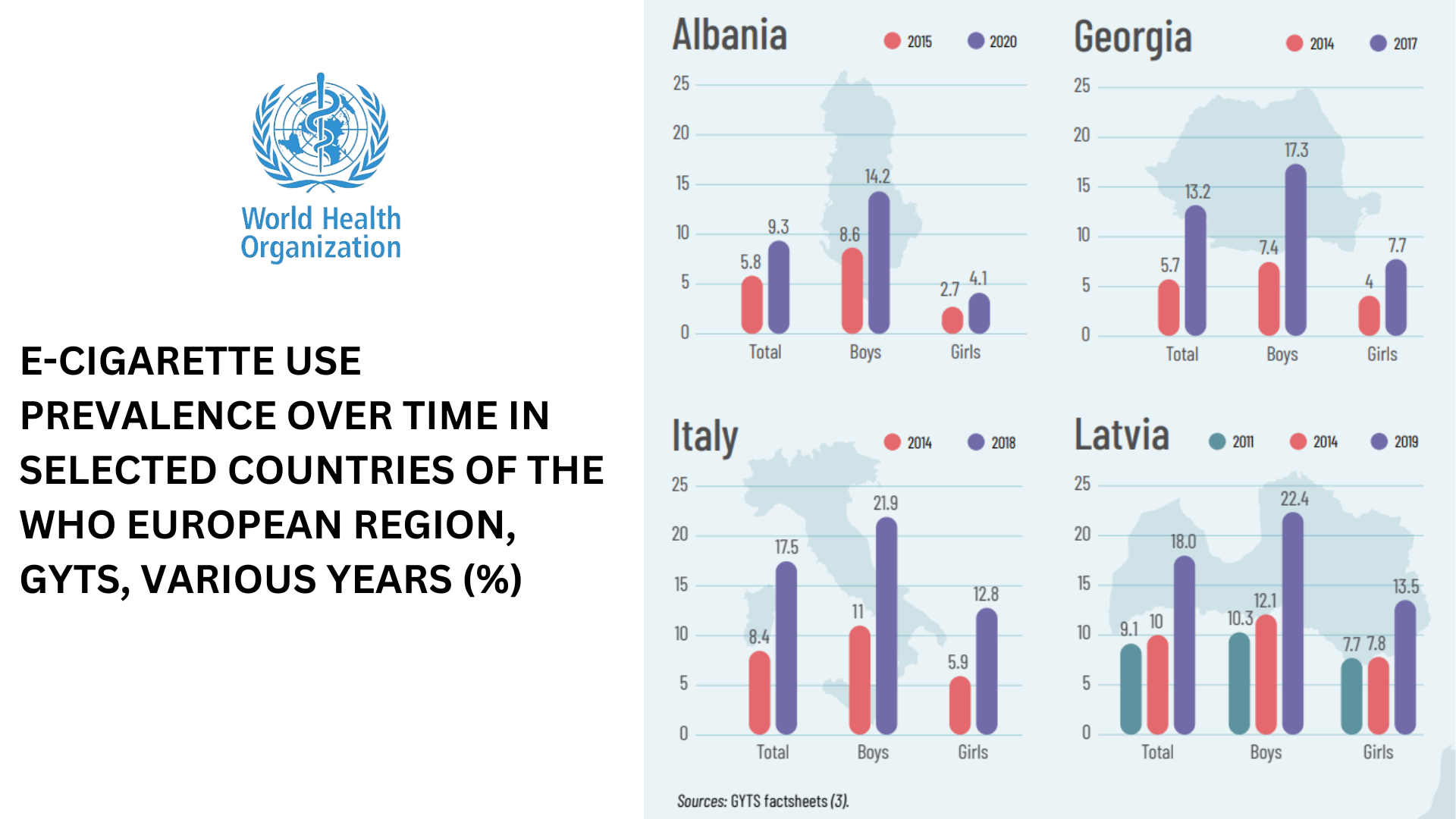The rise of vaping has ushered in a new era of nicotine consumption, particularly among the youth. Understanding the prevalence of teen vaping is crucial in addressing the associated challenges and formulating effective prevention strategies. According to the results of an annual survey released by the FDA, the number of high school students who reported using e-cigarettes fell to 10 percent in the spring of this year from 14 percent last year. This seems to be a good start of regulating the vaping behaviour in school, but can the trend be maintained?
In this comprehensive guide, we will explore the statistics surrounding how many teens vape, unraveling the influencing factors and delving into the potential consequences of this prevalent behavior.

The Prevalence of Teen Vaping: A Statistical Overview
Teen vaping has become a significant public health concern, necessitating a closer look at the statistical landscape to understand the extent of this phenomenon. In this section, we will delve into key findings from reputable surveys that provide valuable insights into the prevalence of teen vaping.
A. National Youth Tobacco Survey (NYTS) Findings
The National Youth Tobacco Survey (NYTS), conducted by the Centers for Disease Control and Prevention (CDC), stands as a crucial barometer for gauging the prevalence of teen vaping in the United States. The survey meticulously collects data on tobacco use among middle and high school students, offering a comprehensive snapshot of current trends.
NYTS findings often reveal nuanced information, including rates of e-cigarette use, frequency of vaping, and demographic patterns. By examining these findings, we can gain a better understanding of how widespread teen vaping is, identifying potential areas for targeted intervention and education.
An investigation from NYTS found out that from 2022 to 2023, current e-cigarette use among high school students declined from 14.1% to 10.0%. E-cigarettes remained the most commonly used tobacco product among youths. Among middle school and high school students who currently use e-cigarettes, 25.2% used e-cigarettes daily, and 89.4% used flavored e-cigarettes.
B. Global Perspective on Teen Vaping
Beyond national borders, the global perspective on teen vaping adds a crucial layer to our understanding of this phenomenon. The World Health Organization (WHO) and other international health bodies monitor and analyze trends in adolescent vaping on a global scale.
Examining the prevalence of teen vaping from a global standpoint allows us to identify commonalities and differences in various regions. Understanding the factors contributing to teen vaping on a broader scale provides valuable context for crafting effective prevention strategies that transcend geographical boundaries.
In a survey carried out in 2022, WHO revealed the youth vaping statistics in four countries, which is an alarming danger.

By integrating insights from these diverse surveys, we can construct a robust statistical overview that informs policymakers, educators, and health professionals about the magnitude of teen vaping. This knowledge serves as a foundation for targeted interventions aimed at reducing the prevalence of this behavior and safeguarding the well-being of the next generation.
Factors Influencing Teen Vaping:
Why do teens vape? How do teens get to know about vaping? Understanding the factors that contribute to teen vaping is essential for designing targeted interventions. Several key components have been identified:
Marketing and Advertising: Aggressive marketing strategies by e-cigarette companies, often featuring appealing flavors and sleek designs, contribute to the allure of vaping among teens.
Peer Influence: Peer pressure plays a significant role, with teens being more likely to engage in vaping if their friends or peers are involved.
Accessibility: The accessibility of e-cigarettes, including online sales and discreet devices like pod systems, contributes to the ease with which teens can obtain vaping products.
Perceived Harmlessness: Some teens perceive vaping as less harmful than traditional smoking, contributing to the willingness to experiment with e-cigarettes.
Potential Consequences of Teen Vaping
Vaping is deemed as an alternative choice to traditional smoking, while it is not risk-free – it still brings out some health concerns. The surge in teen vaping comes with potential consequences that extend beyond immediate health risks. Hereby there are several common dangers we have to know:
Nicotine Addiction: Vaping exposes teens to nicotine, a highly addictive substance. The developing adolescent brain is particularly susceptible to the adverse effects of nicotine, potentially leading to addiction.
Gateway to Smoking: For adult smokers, vaping might be a good start to quit smoking. However, research suggests that teens who vape are more likely to transition to smoking traditional cigarettes, highlighting the potential gateway effect of vaping.
Health Risks: While vaping is often marketed as a safer alternative to smoking, it is not without health risks. The inhalation of harmful substances present in e-cigarette aerosol can contribute to respiratory issues and other health concerns.
Impact on Mental Health: The addictive nature of nicotine, coupled with the social and academic consequences of substance use, can contribute to mental health challenges among teens who vape.
Prevention and Intervention Strategies
In addressing the issue of teen vaping, a multi-faceted approach is necessary, and it takes efforts from the whole society, especially the vaping community.
Comprehensive Education: Implementing educational programs that provide accurate information about the risks associated with vaping can empower teens to make informed choices.
Policy and Regulation: Strengthening and enforcing regulations on the marketing, sale, and accessibility of vaping products can curb their prevalence among teens.
Supportive Environments: Fostering supportive environments that discourage substance use and promote healthy alternatives can contribute to prevention efforts.
Parental Involvement: Open communication between parents and teens, coupled with parental involvement in their children’s lives, is crucial for deterring vaping behaviors.
Conclusion
Understanding how many teens vape is pivotal in developing targeted strategies to address this prevalent behavior. By examining the statistics, influencers, and potential consequences, we can work towards creating a safer environment for adolescents and mitigating the impact of teen vaping on public health. With informed interventions and collaborative efforts, we can navigate this complex landscape and strive towards a healthier future for the youth.
Post time: Jan-29-2024

